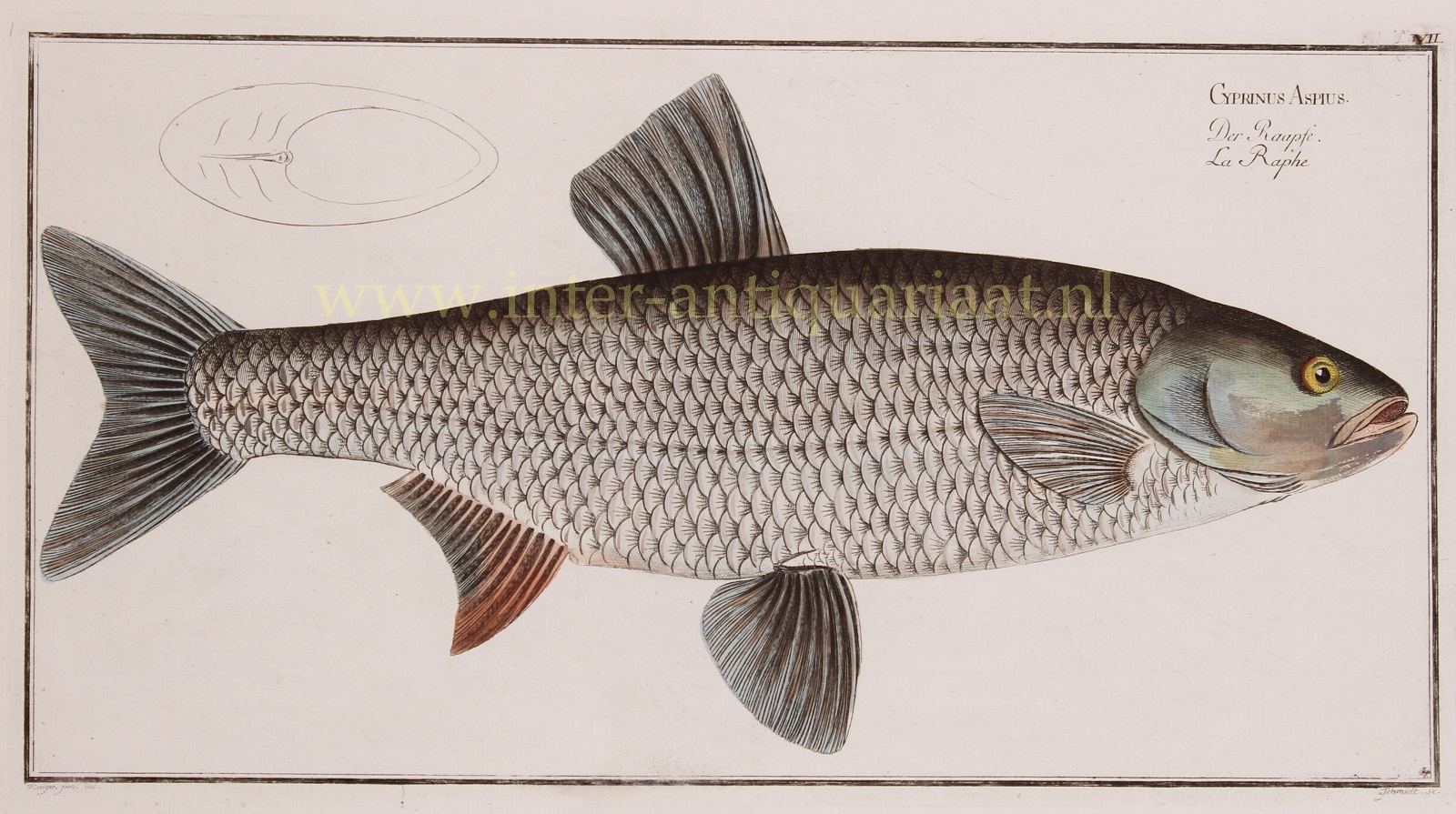THE ASP
“Cyprinus Aspius/Der Raapfe/La Raphe” (plate 7), copper engraving made by Ludwig Schmidt after the drawing of Krüger jr, for Markus Elieser Bloch’s “Allgemeine Naturgeschichte der Fische” published in Berlin between 1782 and 1795. With original hand colouring. Size: 19 x 38 cm.
According to Bloch in his Allgemeine Naturgeschichte der Fische, a 12-volume, beautifully illustrated comprehensive work on fishes: “The asp is one of those river fish that grow to a considerable size: for it is, at least in this region; not uncommon to find one from ten to twelve pounds. To a certain extent it makes the transition from the ground- to the predatory fish; for, like the former, it lives on herbs and worms, but also eats fish, like the latter. But since it is not provided with such a large jaws as the privileged predators among the water-dwellers; it has to be content with small fish. It loves a clear ground, likes to be in rivers that have no fast-flowing water, and leaves its spawn on the stones at the bottom towards the end of March. It has a white and tasty meat, which is fat outside of the spawning season, and has the characteristic that it fall apart during cooking, much to the annoyance of the cooks. Also its meat is full of small bones, and because it is soft and fat, it does not make the best food for a weak stomach.”
Bloch’s labour on the “Allgemeine Naturgeschichte der Fische” occupied a considerable portion of his life, and is considered to have laid the foundations of the science of ichthyology. The publication was encouraged by a large subscription, and it passed rapidly through five editions in German and in French. Bloch made little or no alteration in the systematic arrangement of Peter Artedi and Carl Linnaeus, although he was disposed to introduce into the classification some modifications depending on the structure of the gills. To the number of genera before established, he found it necessary to add nineteen new ones, and he described 276 species new to science, many of them inhabitants of the remotest parts of the ocean, and by the brilliancy of their colours, or the singularity of their forms, as much objects of popular admiration as of scientific curiosity.
Bloch is considered the most important ichthyologist of the 18th century.
Price: SOLD


